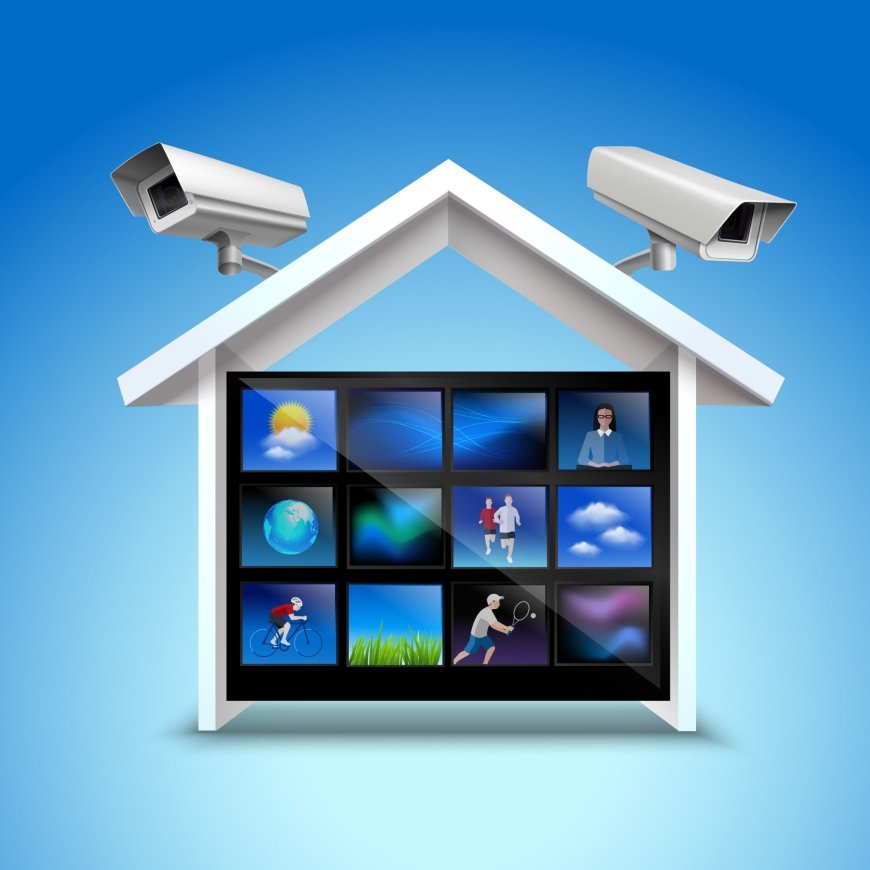Choosing the Right Home Surveillance System: A Practical Guide

In today’s world, keeping your home and property safe is more important than ever. Whether you're concerned about package theft, break-ins, or just want peace of mind when you're away, a good home surveillance system can make a big difference.
With so many options available, choosing the right setup can be confusing. In this guide, we’ll walk through the basics of what to look for in a system, how different camera types serve different needs, and why options like the Lorex camera system are trusted by many homeowners.
What Is a Home Surveillance System?
At its core, a home surveillance system includes one or more cameras, a way to store or view footage, and often a mobile app to access your video remotely. Some systems are wired, while others use Wi-Fi. You can go with simple indoor monitoring or a more advanced setup that covers the entire property, including outdoor areas.
Common components include:
-
Indoor and outdoor cameras
-
Video recorders (DVR/NVR)
-
Motion sensors
-
Remote viewing apps
Surveillance systems aren’t just about preventing crime—they also help monitor deliveries, visitors, pets, or even maintenance workers.
Wired vs Wireless: What’s Better for You?
When choosing a home surveillance system, one of the first decisions to make is between wired and wireless setups.
Wired systems (like the Lorex camera system) tend to be more reliable because they aren’t affected by Wi-Fi interruptions. They also usually support higher video quality and larger storage options. On the downside, they require more installation effort.
Wireless systems are easier to install and often look more modern. However, they can be less stable if your Wi-Fi signal is weak or crowded.
Your choice depends on what you're prioritizing: ease of installation or long-term performance.
Why the Lorex Camera System Is a Popular Option
The Lorex camera system is one of the more commonly used options in home surveillance. Known for its durable build and high-resolution video, it’s well-suited for those who want to monitor both inside and outside their homes.
Key features include:
-
4K video quality
-
Local storage with no monthly fees
-
Night vision
-
Motion detection
-
Mobile app access
Lorex offers both wired and wireless systems, making it flexible depending on your installation needs. For homeowners who want control over their data without being locked into a subscription, Lorex is a solid choice.
Using Dome Security Cameras for Discreet Home Monitoring
Dome security cameras are often used in both commercial and residential settings. Their low-profile, rounded design makes them less noticeable, which can be ideal for entryways, porches, and garages.
Some benefits of dome cameras in home systems include:
-
Vandal-resistant design
-
Wide viewing angle
-
Suitable for indoor and outdoor use
-
Sleek, discreet appearance
These cameras can often be ceiling- or wall-mounted and are great for monitoring high-traffic areas without drawing too much attention.
Jobsite Security Cameras: Not Just for Work Zones
While jobsite security cameras are typically used on construction sites, their features can also make them useful for home use—especially for people with large properties, detached garages, or vacation homes.
These cameras are built to handle harsh environments and usually include:
-
Weatherproof housings
-
Long-range night vision
-
Mobile viewing features
-
Motion alerts
If you’re securing a shed, barn, or even a backyard workshop, jobsite-style cameras offer the durability and coverage you might not get from basic indoor models.
Storage: Local vs Cloud-Based
One key consideration with any home surveillance setup is where your footage is stored.
Local storage (as seen in many Lorex systems) typically uses a DVR or NVR. This means you own and control all the footage without relying on internet access or third-party services.
Cloud storage uploads your video to a secure server. This can be useful if your camera is damaged or stolen, but it usually comes with monthly fees and privacy trade-offs.
For those who prefer full control and no recurring costs, local storage is often the better option.
Smart Features: What Matters, and What Doesn’t
Many modern systems offer smart features like facial recognition, voice assistant integration, and object tracking. While these can be useful, they’re not always necessary for everyone.
Features worth prioritizing:
-
Motion alerts
-
Two-way audio
-
Mobile notifications
-
Reliable night vision
Other features, while nice, may just complicate setup without adding much real value. The goal is to choose a system that works for your lifestyle—not one that overwhelms you with extras.
Installation Tips for Homeowners
Whether you're going the DIY route or hiring a professional, good placement is key. Here are a few quick tips:
-
Mount outdoor cameras high enough to avoid tampering
-
Cover entry points like front/back doors and windows
-
Avoid pointing cameras directly into the sun or bright lights
-
Use dome cameras in tight or indoor areas
If you're installing a large system or want hands-off service, brands like backstreet-surveillance offer professionally supported options.
Final Thoughts: Finding the Right Fit
Choosing a home surveillance system doesn’t have to be complicated. Think about your priorities—are you looking for high-definition footage, a system with no monthly fees, or something durable for outdoor use?
Whether you're using dome security cameras for their sleek design or adapting jobsite security cameras for rugged coverage, there’s a solution out there that fits your needs.
The Lorex camera system continues to be a reliable choice for many homeowners thanks to its clarity, flexibility, and practical features. The key is to build a system that works for your space and helps you feel secure, without adding unnecessary complexity.
What's Your Reaction?


















































